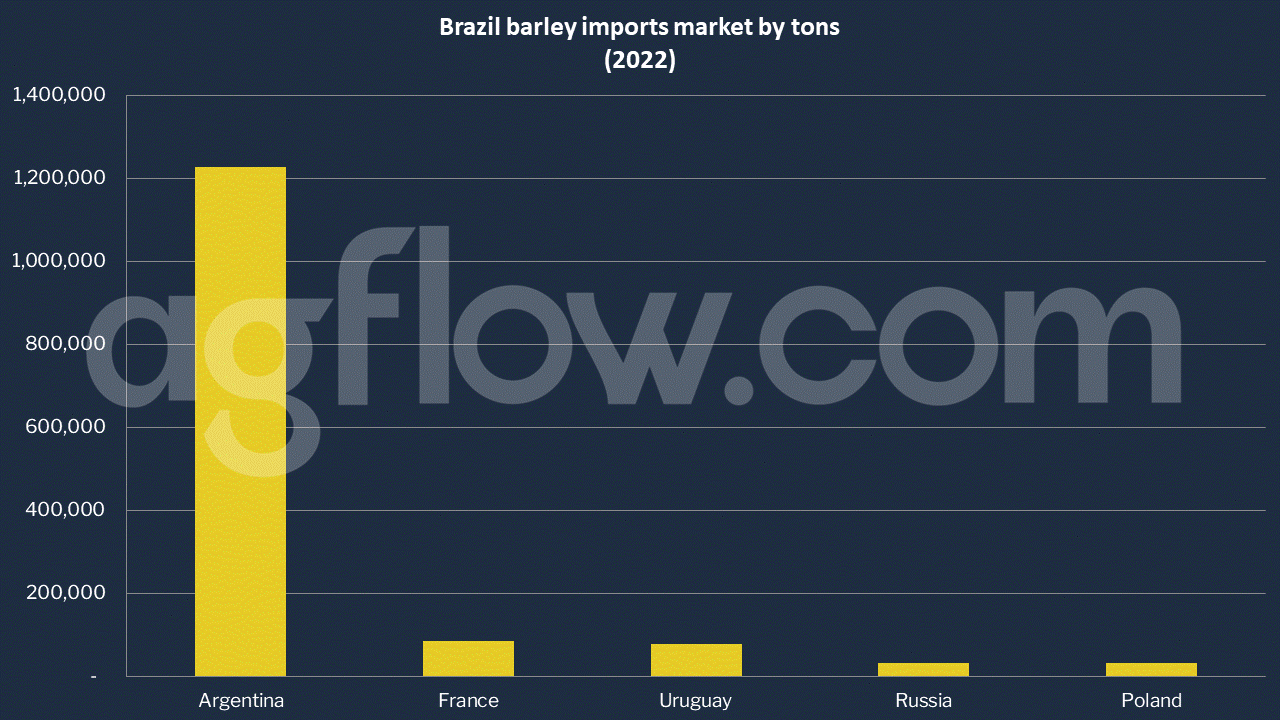Brazilian Barley Yield Quadruples
Reading time: 2 minutes
The cultivation of Barley began to expand in Brazil from the 1970s onwards, mainly due to the initiatives of the brewing industry, which encouraged national production to guarantee supply. From 1976 to the present day, the cultivated area has fluctuated around 100,000 hectares. The yield of the crop, however, showed a constant increase throughout this period, going from 1,018 kg/ha in 1976 to 3,812 kg/ha in 2021, which also ensured a continuous rise in national production, which went from 95 thousand tons to 425 thousand tons in the same period. For the 2022 harvest, the forecast was to reach a record of 430.8 thousand tons of Barley.
Barley is the fifth most prominent grain in the world, second only to rice, corn, wheat, and soy. Brazil follows a global trend, where the area destined for Barley cultivation in the world has been falling since the end of the 1970s when it reached 80 million hectares. Currently, there are around 50 million hectares. The volume produced, however, has increased, despite the reduction in the planted area, thanks to the constant increases in productivity brought about by improvements in production techniques and the genetic modification of the crop.
To meet the need for Barley grains by the malting plants installed in Brazil, around 830,000 tons of grains are required annually, twice the volume produced in recent years. The cultivation of Barley in Brazil is concentrated in the South Region, with the grains destined mainly for the production of malt used by the brewing industry. In recent years, the cultivation area has increased in Paraná. However, it reduced in Rio Grande do Sul and Santa Catarina.
According to researcher Aloisio Vilarinho from Embrapa Trigo, one of the reasons that could be pointed out for the reduction in the Barley cultivation area in Rio Grande does Sul are the uncertainties caused by the climate, mainly in the reproductive period of the culture, when the excess of rain can impair grain quality by increasing mycotoxin levels or reducing the germination rate of harvested grains. He explains that to be used in malting, Barley grains must meet some minimum quality standards, and harvesting in a stormy period impairs the achievement of this standard. Grains that do not meet the standard are not accepted for malting and are destined for other uses, including animal feed, but at prices much lower than those paid for malt-quality grains.
Evolving in production technology and, mainly, in genetic improvement, with the development of Barley cultivars with better quality grains for use in malting and capable of minimizing the effects of climate on the quality of harvested grains are ways to encourage a possible increase in the area of cultivation, ensuring greater security for farmers to invest in the crop and stability in the supply of quality grains for the industry

Brazilian Barley Segmentation and Trade
In Rio Grande do Sul, where more than 100 thousand hectares of Barley were cultivated in the late 1990s, in 2021, only 38 thousand hectares were cultivated. Even with 73,400 hectares in 2021, the gradual increase in area in Paraná has not been enough to meet the growing demand for Barley grains. In Brazil, almost 85% of the Barley produced is destined for the industrialization of malt. About 7% is reserved for seed production, and the remaining 8% is used to prepare the animal feed.
As per the AgFlow data, Argentina shipped 1.2 million tons of Barley to Brazil in 2022, followed by France (87,000 tons), Uruguay (80,000 tons), Russia (33,700 tons), and Poland (33,000 tons). In terms of export, Brazil shipped tons 0.2 million tons of Barley to Argentina, followed by Sweden (22,000 tons), and Belgium (9,000 tons).
Other sources: EMBRAPA
Try AgFlow Free
Access Free On Updates for Corn, Wheat, Soybean,
Barley, and Sunflower Oil.
No Credit Card Required & Unlimited Access In Time

